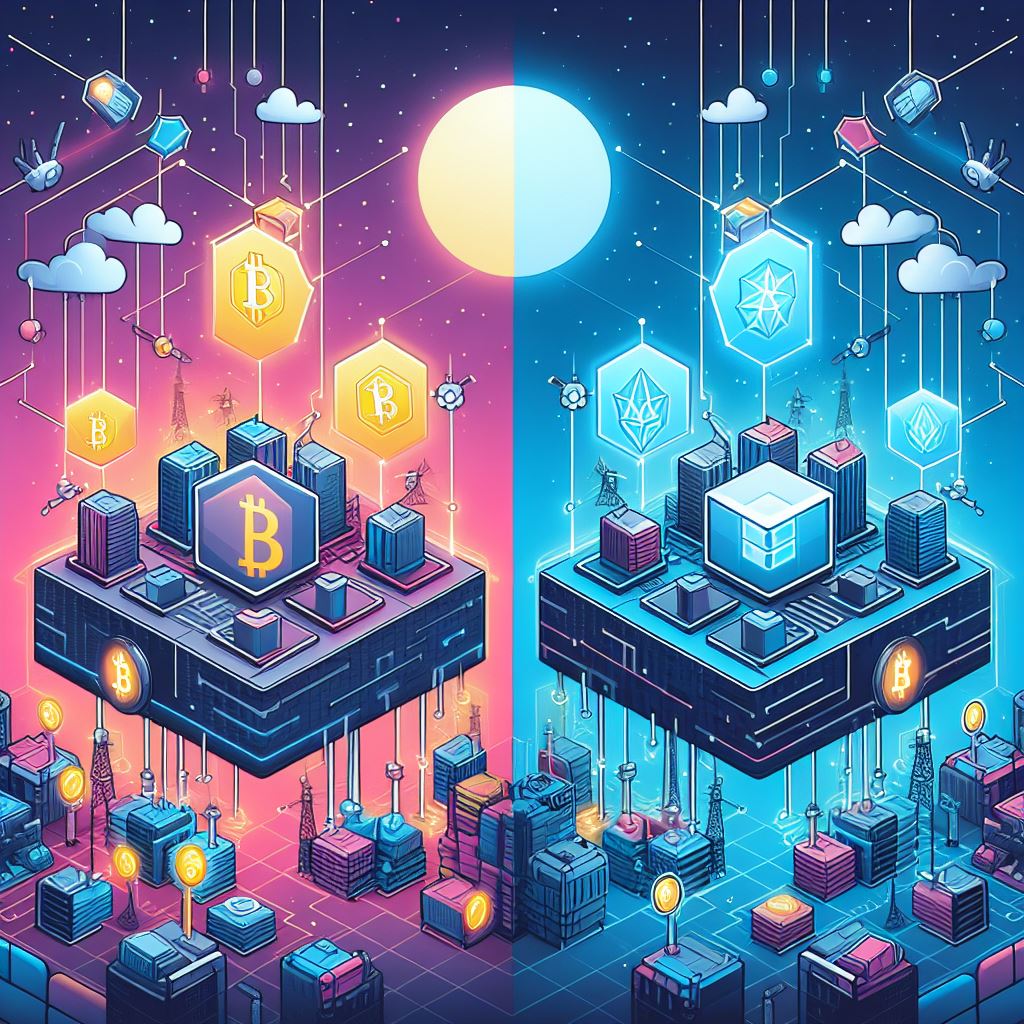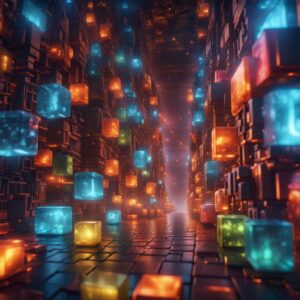Introduction
Blockchain and BlockDAG are two of the most popular distributed ledger technologies (DLTs) in the world of cryptocurrencies. Both technologies have their unique features and benefits, and they are used for different purposes. In this blog post, we will compare Blockchain and BlockDAG and discuss their advantages, disadvantages, and limitations.
Understanding Blockchain
Blockchain is a digital ledger that records transactions securely and transparently. It is a chain of blocks containing information, and each block records a number of transactions. Once a block is full, a new block is created, linking back to the previous one. This forms a chain of blocks – hence, blockchain. Blockchain is decentralized, meaning that it operates on multiple devices, ensuring no single point of failure. All participants have access to the ledger and can view transactions. Transactions must be approved through consensus algorithms, making unauthorized actions nearly impossible.
Key Features and Benefits
- Decentralization: Unlike centralized systems, where a single entity has control, blockchain operates on multiple devices, ensuring no single point of failure.
- Transparency: All participants have access to the ledger and can view transactions.
- Security: Transactions must be approved through consensus algorithms, making unauthorized actions nearly impossible.
Limitations and Challenges
- Scalability: As more blocks are added, the system can become slower.
- Irreversibility: Once a transaction is added, it cannot be changed or deleted.
- Energy Consumption: Mining processes can consume vast amounts of energy.
Diving into BlockDAG
BlockDAG, or Directed Acyclic Graph, is a newer structure where blocks can have multiple parents, leading to multiple blocks being added simultaneously. This contrasts with blockchain’s linear addition of blocks. BlockDAG is faster than blockchain due to the ability to process multiple blocks at once. It is also more efficient, reducing the need for block confirmations. BlockDAG adapts better to network changes, making it more flexible than blockchain.
Advantages
- Speed: Multiple blocks mean faster transaction times.
- Efficiency: Reduced need for block confirmations.
- Flexibility: Adapts better to network changes.
Disadvantages
- Scalability: As more blocks are added, the system can become slower.
- Irreversibility: Once a transaction is added, it cannot be changed or deleted.
- Security: BlockDAG introduces a more flexible structure, potentially enhancing scalability, but may require careful design to maintain security.
Comparative Analysis: Blockchain vs BlockDAG
The debate between Blockchain and BlockDAG is akin to comparing two technological giants, each with its own set of strengths and weaknesses. While both aim to provide decentralized solutions and enhance the world of digital transactions, their underlying structures and functionalities differ significantly.
Basic Structure
- Blockchain: Linear chain of blocks, where each block links to the previous one.
- BlockDAG: Directed Acyclic Graph where blocks can have multiple parents.
Block Addition
- Blockchain: Blocks are linearly added one after the other.
- BlockDAG: Multiple blocks can be added simultaneously.
Speed
- Blockchain: Generally slower due to the linear addition of blocks.
- BlockDAG: Generally faster due to the ability to process multiple blocks at once.
Security
- While both technologies aim for security, the approaches differ. Blockchain focuses on a linear, sequential structure with a strong emphasis on consensus mechanisms.
- BlockDAG introduces a more flexible structure, potentially enhancing scalability, but may require careful design to maintain security.
Scalability
- Blockchain faces challenges with increasing transaction volume over time.
- BlockDAG has the potential for greater scalability due to its ability to process transactions concurrently.
Conclusion
Both Blockchain and BlockDAG are decentralized technologies that promise to revolutionize the way we perceive and handle digital transactions. While Blockchain is more secure, BlockDAG is faster and more efficient. The choice between the two depends on the specific use case and the requirements of the user.
FAQs
What is Blockchain?
Blockchain is a digital ledger that records transactions securely and transparently.
What is BlockDAG?
BlockDAG, or Directed Acyclic Graph, is a newer structure where blocks can have multiple parents, leading to multiple blocks being added simultaneously.
Which is better: Blockchain or BlockDAG?
The choice between Blockchain and BlockDAG depends on the specific use case and the requirements of the user. However, due to the speed and lower costs, BlockDAG is a possible contender for real-world usage. Just don’t get us started on $QUBIC, that’s just another level :/.
Popular Coins using Blockchain
- Bitcoin (BTC): The first and most well-known cryptocurrency, Bitcoin is a decentralized digital currency that operates on a blockchain.
- Ethereum (ETH): Ethereum is a decentralized platform that enables the creation of smart contracts and decentralized applications (dApps) on its blockchain.
- Binance Coin (BNB): Binance Coin is a utility token used to pay for fees on the Binance cryptocurrency exchange.
- Cardano (ADA): Cardano is a decentralized platform that aims to provide a more secure and sustainable blockchain ecosystem.
- Dogecoin (DOGE): Dogecoin is a cryptocurrency that was created as a joke, but has since gained a large following.
Popular Coins using BlockDAG
- Kaspa (KAS): Kaspa is a decentralized platform that uses a blockDAG structure to enable faster and more efficient transactions.
- Taraxa (TARA): Taraxa is a high-performance blockchain that uses a blockDAG structure to enable fast and secure transactions.
- Obyte (GBYTE): Obyte is a decentralized platform that uses a blockDAG structure to enable fast and secure transactions.
- Nano (NANO): Nano is a cryptocurrency that uses a block-lattice structure, which is similar to a blockDAG, to enable fast and feeless transactions.
- IOTA (MIOTA): IOTA is a cryptocurrency that uses a blockDAG structure, called the Tangle, to enable fast and feeless transactions.





